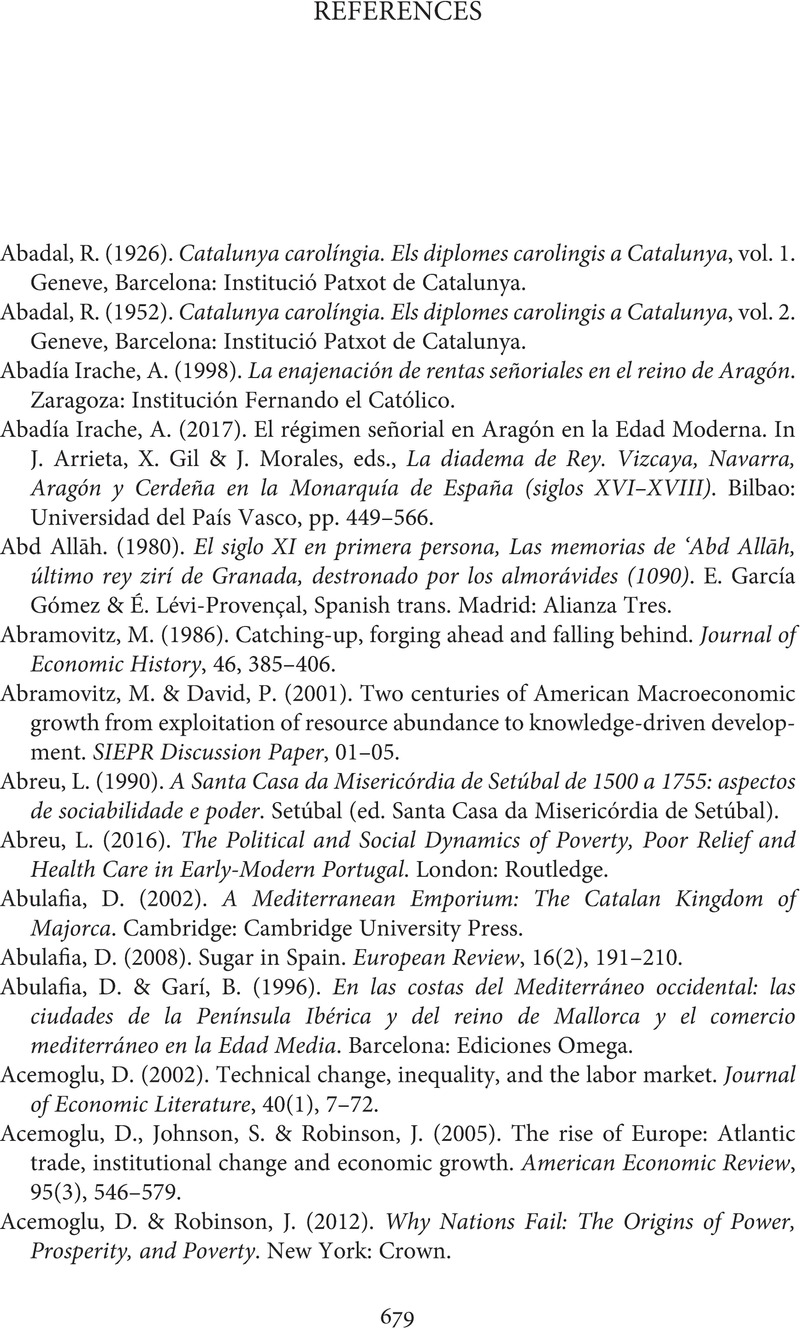Book contents
- An Economic History of the Iberian Peninsula, 700–2000
- An Economic History of the Iberian Peninsula, 700–2000
- Copyright page
- Contents
- Figures
- Tables
- Contributors
- Preface: By Way of Presentation
- Introduction
- Part I The Making of Iberia, 700–1500
- Part II Globalization and Enlightenment, 1500–1800
- Part III Industrialization and Catching Up, 1800–2000
- References
- Index
- References
References
Published online by Cambridge University Press: 22 February 2024
- An Economic History of the Iberian Peninsula, 700–2000
- An Economic History of the Iberian Peninsula, 700–2000
- Copyright page
- Contents
- Figures
- Tables
- Contributors
- Preface: By Way of Presentation
- Introduction
- Part I The Making of Iberia, 700–1500
- Part II Globalization and Enlightenment, 1500–1800
- Part III Industrialization and Catching Up, 1800–2000
- References
- Index
- References
Summary

Information
- Type
- Chapter
- Information
- An Economic History of the Iberian Peninsula, 700–2000 , pp. 679 - 767Publisher: Cambridge University PressPrint publication year: 2024
